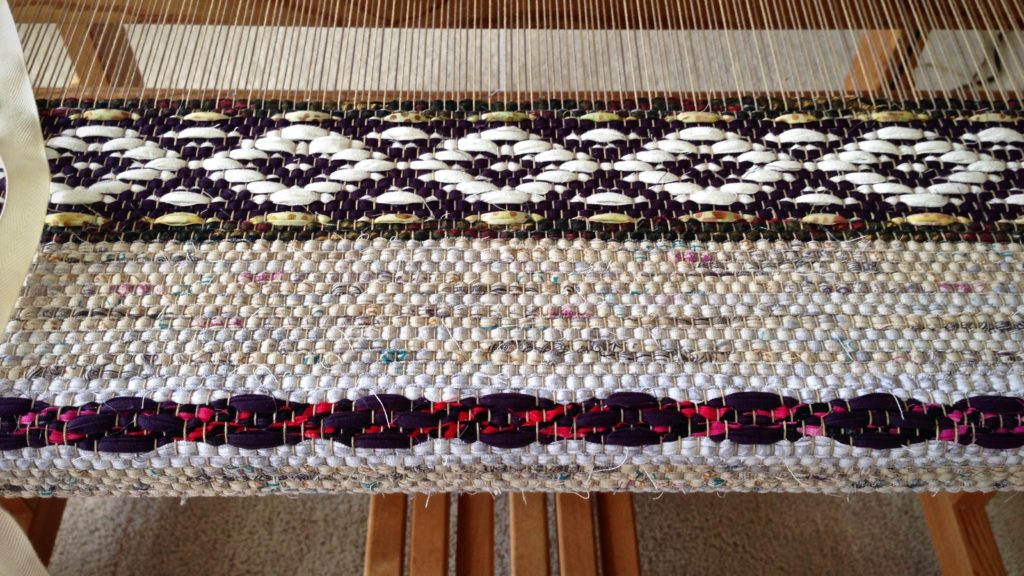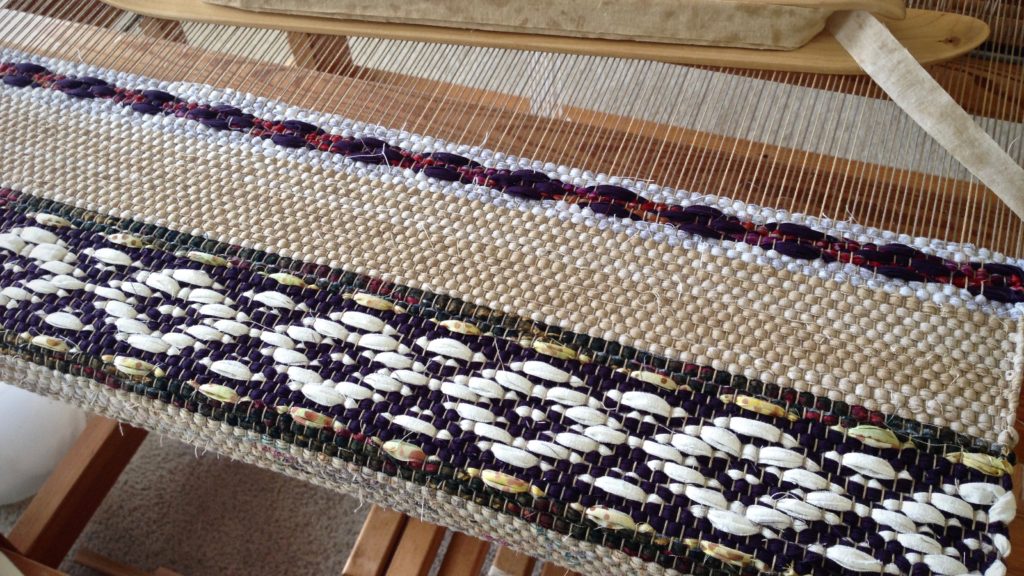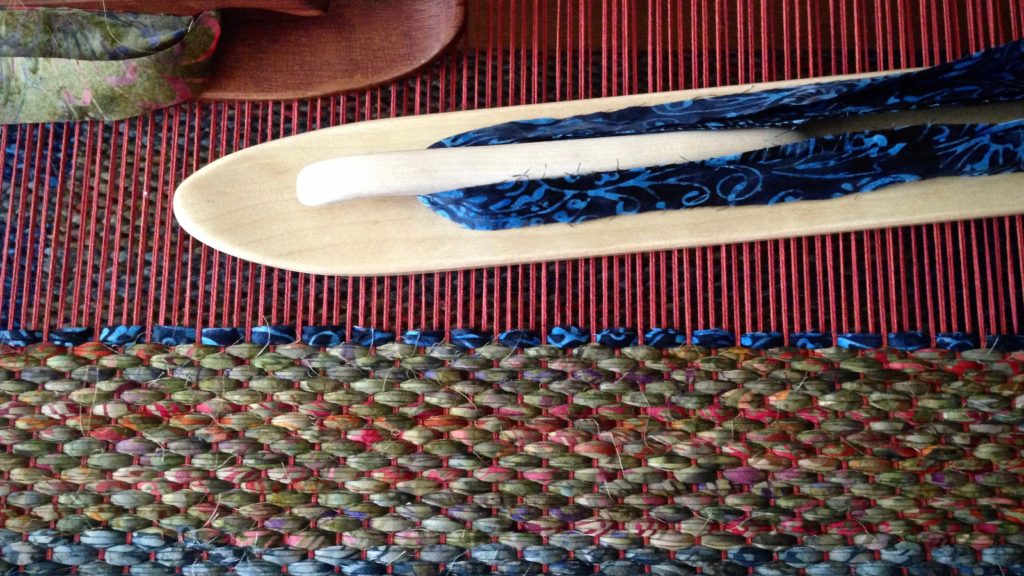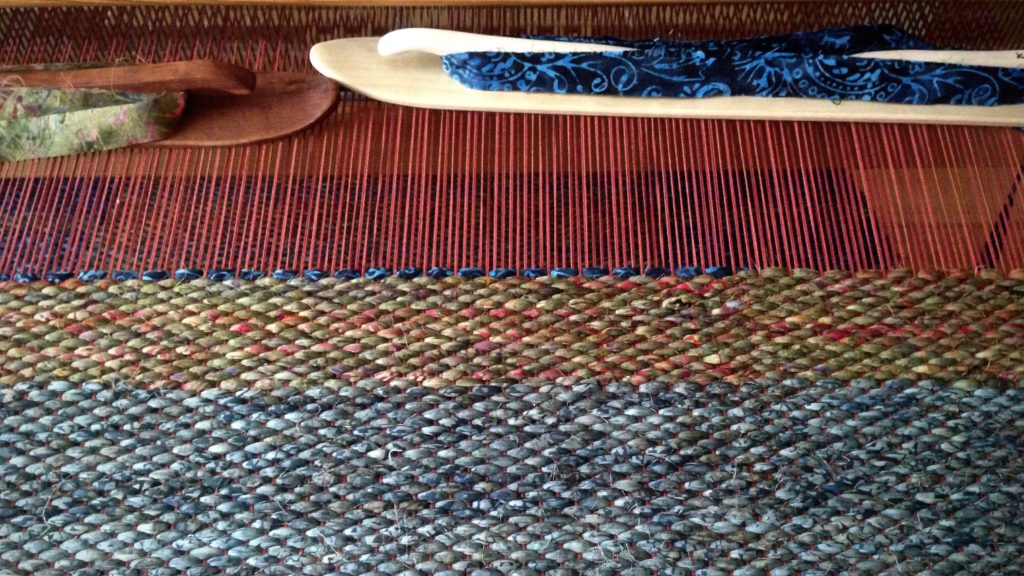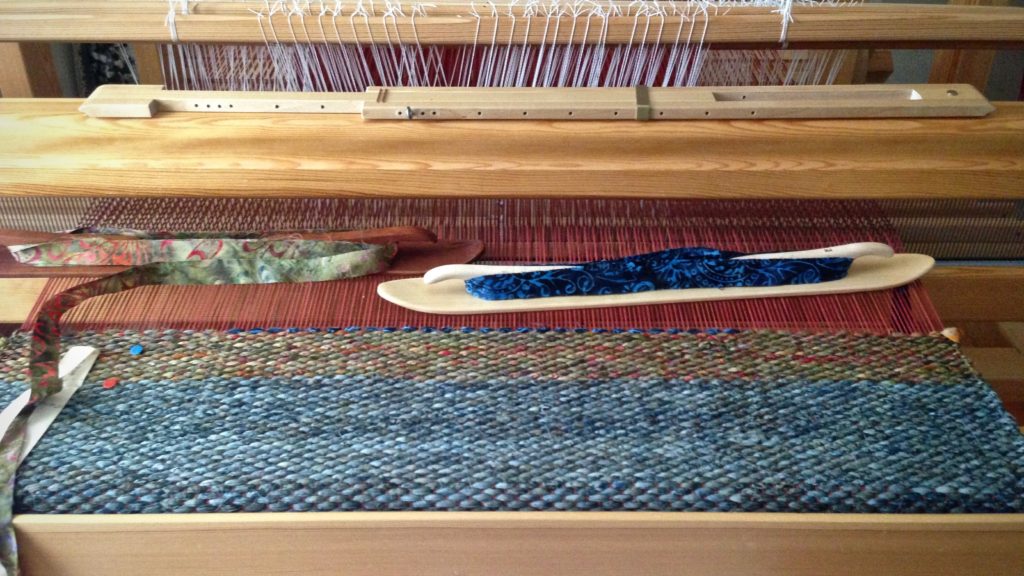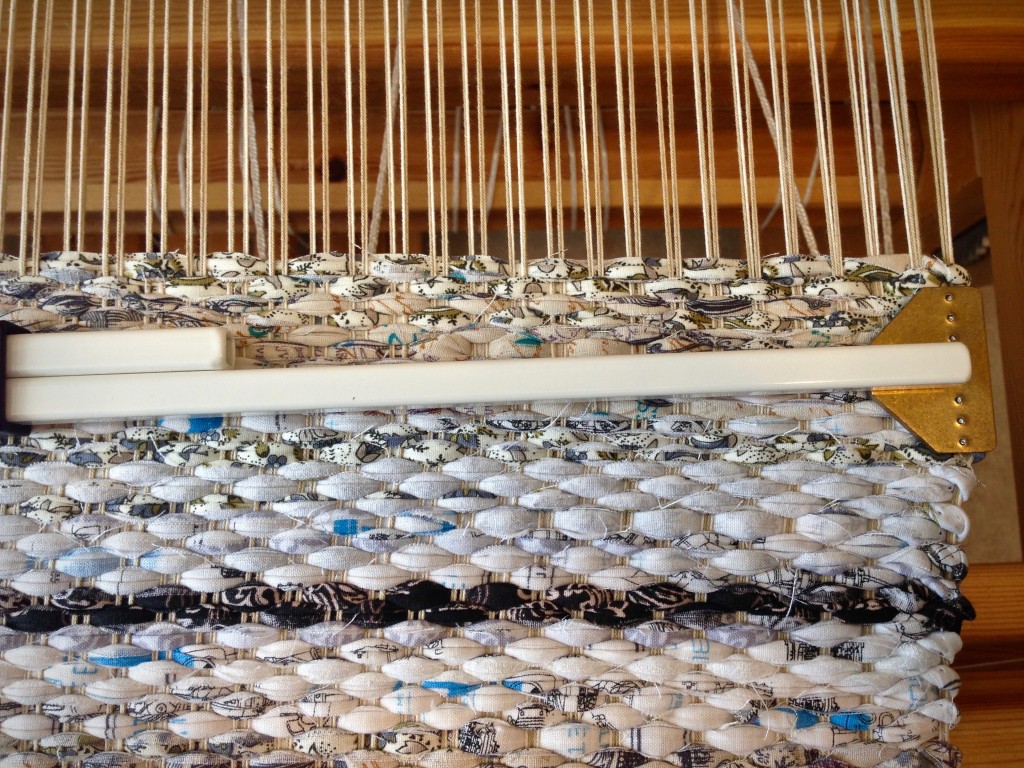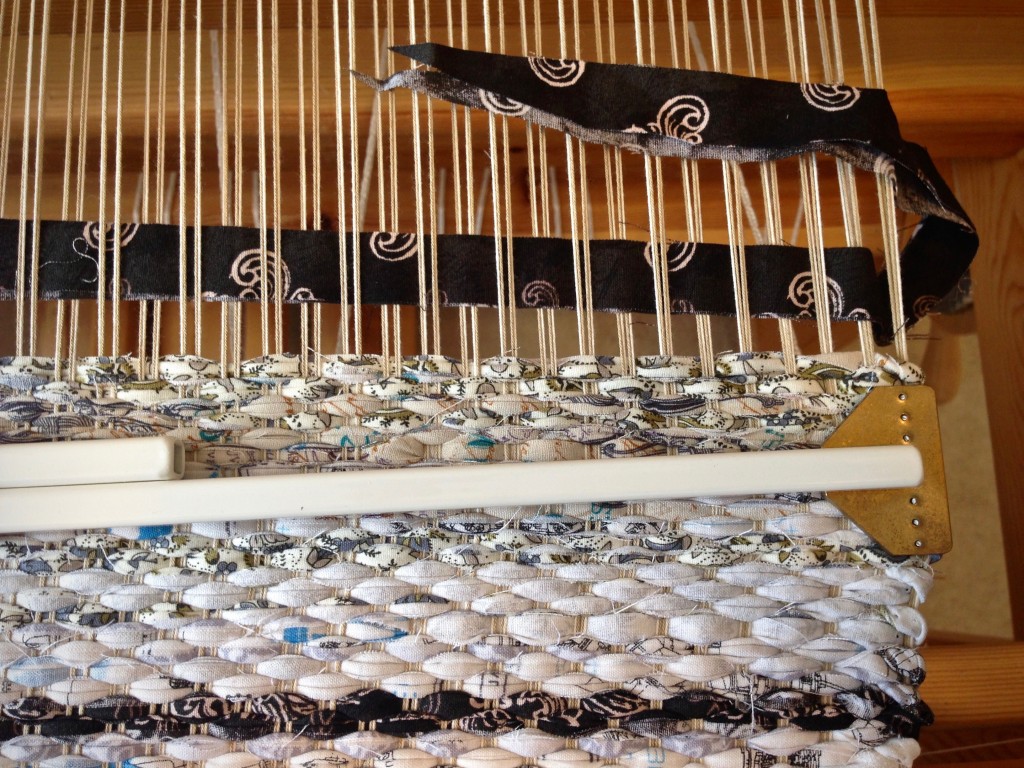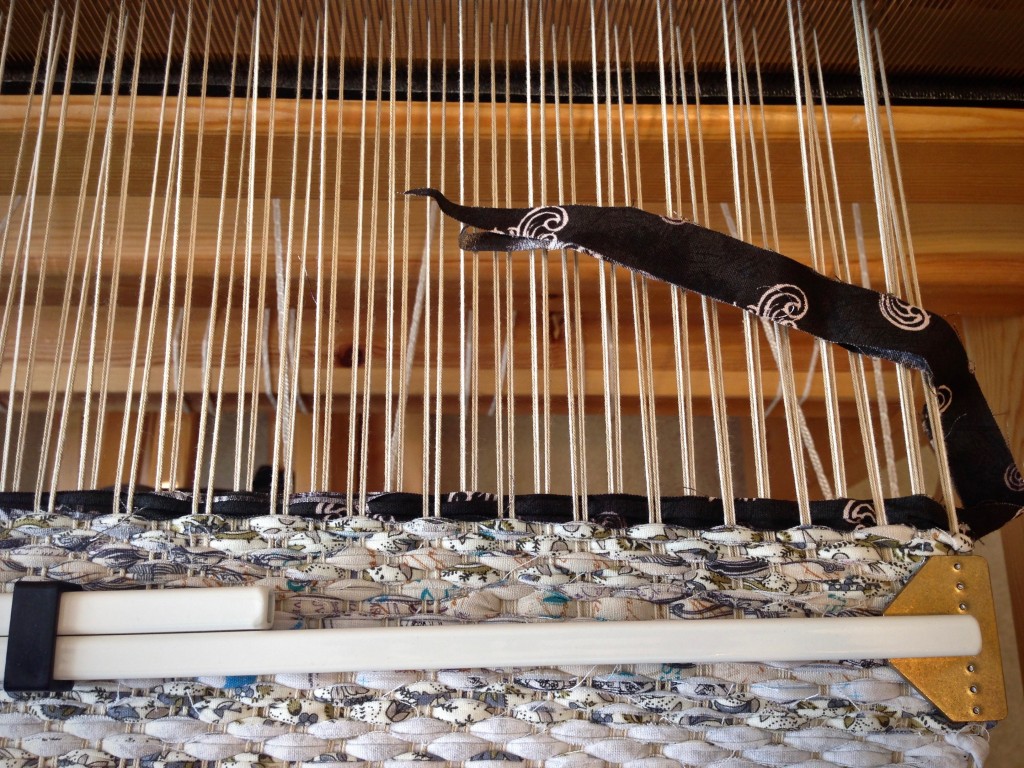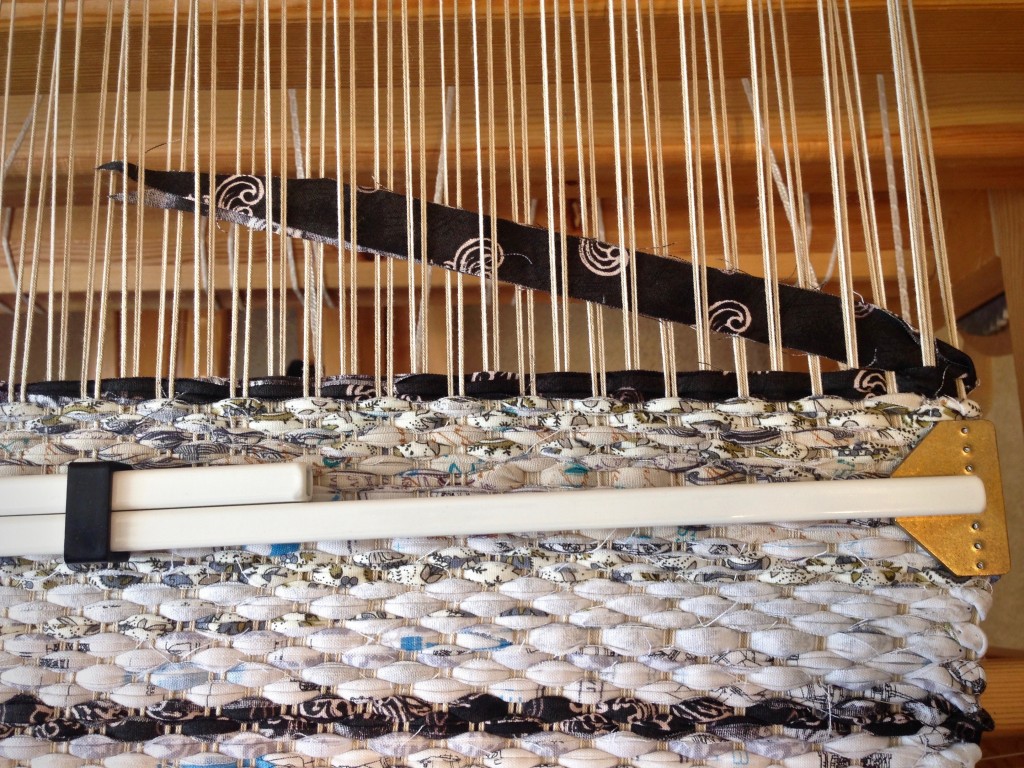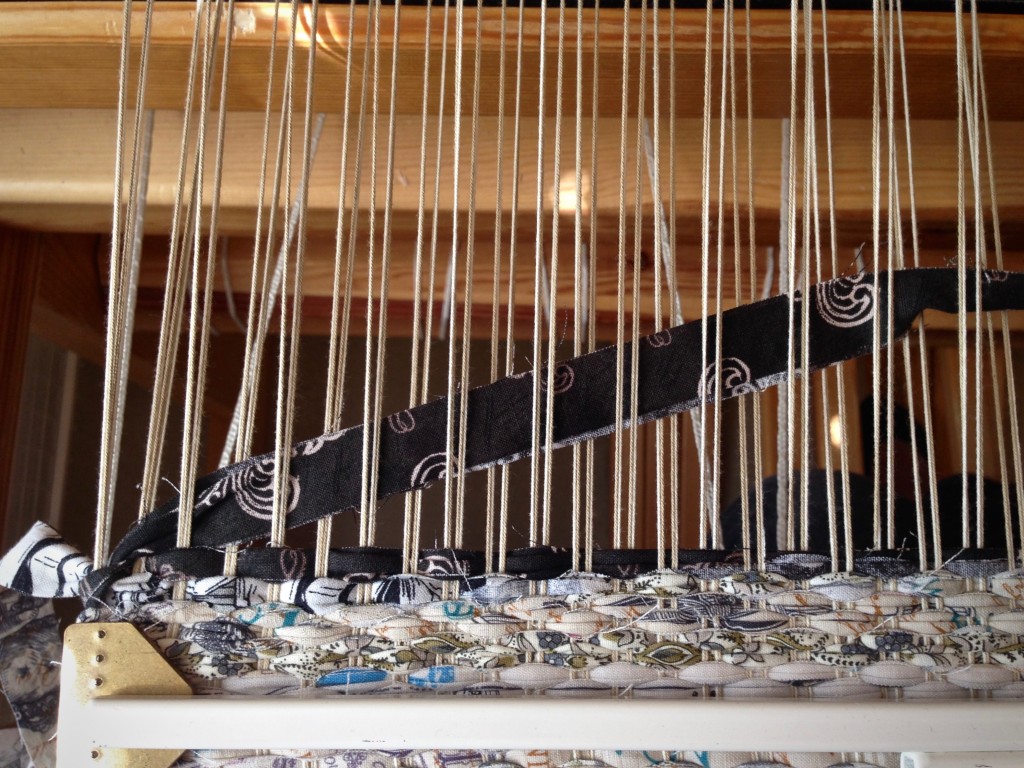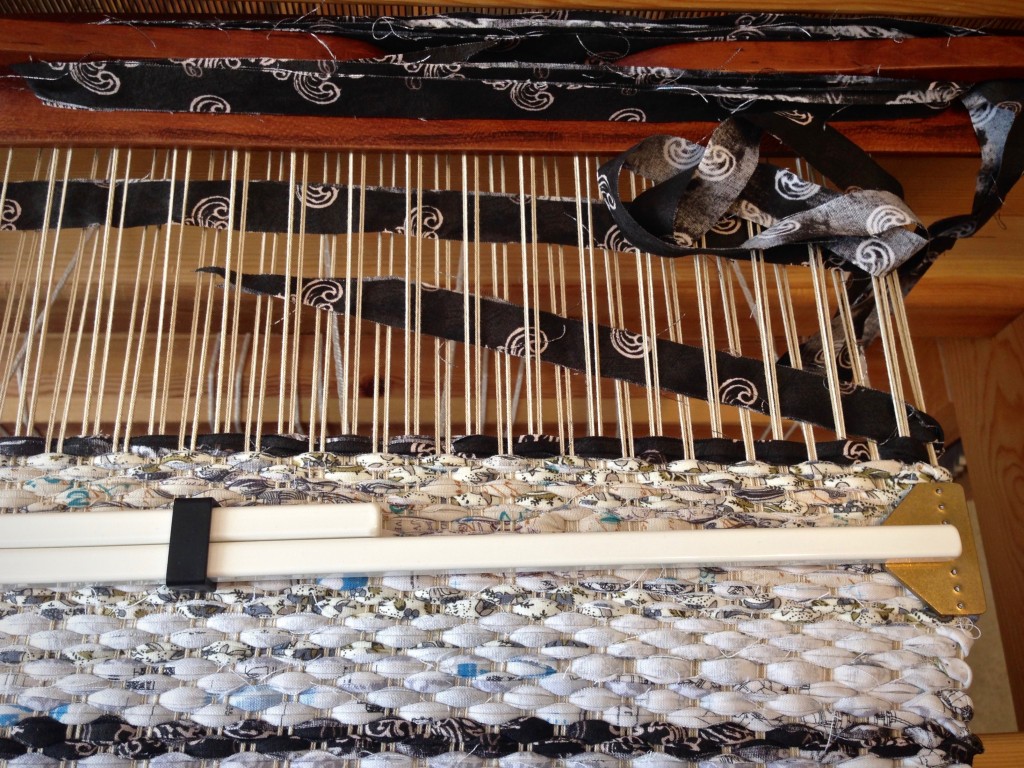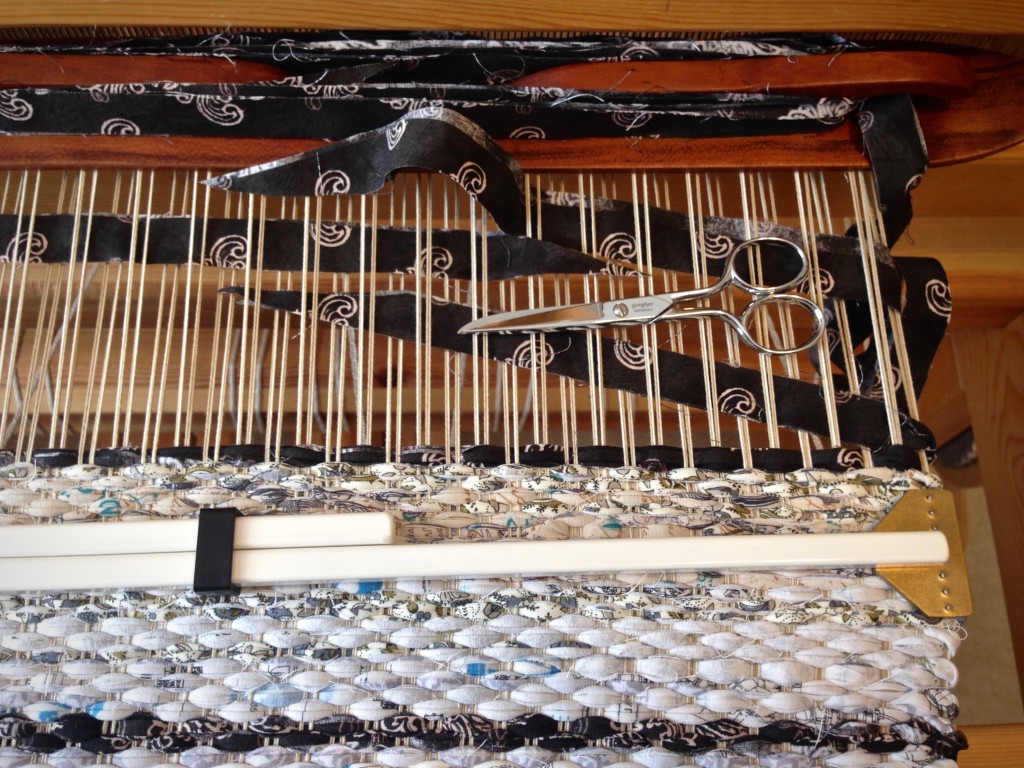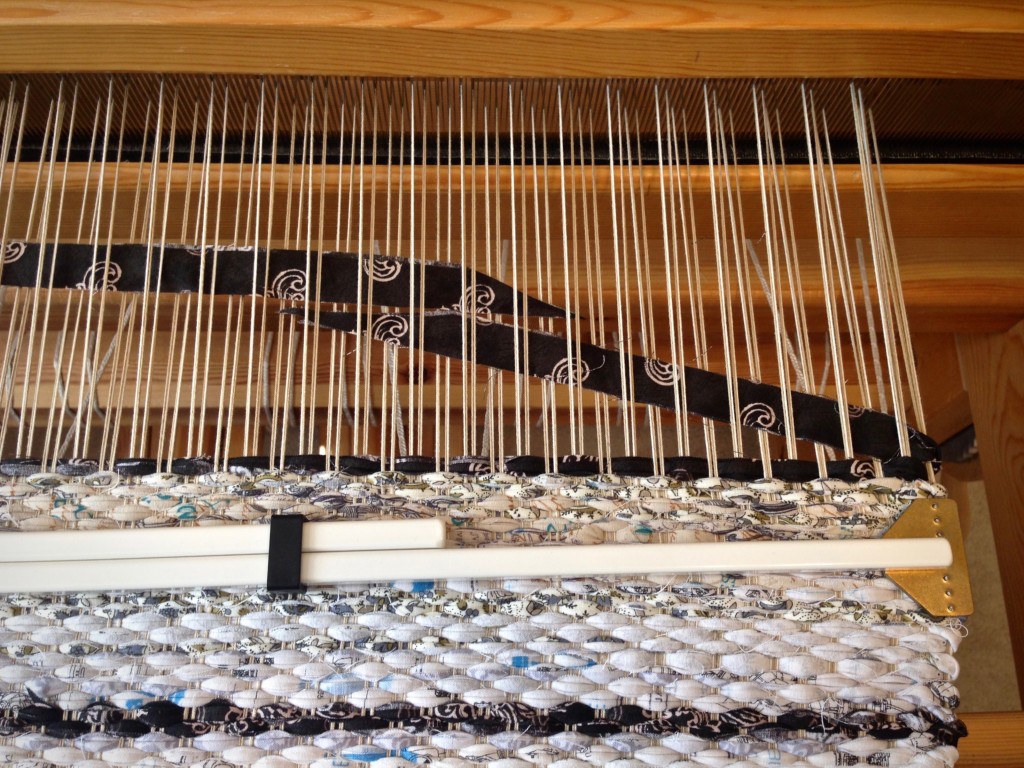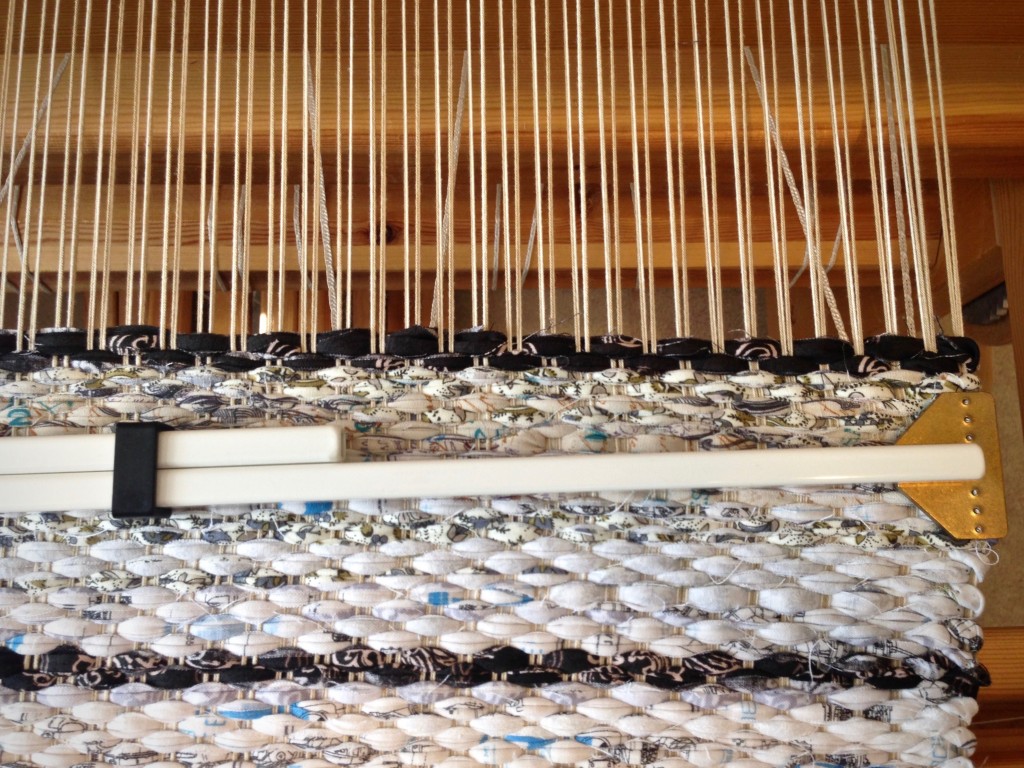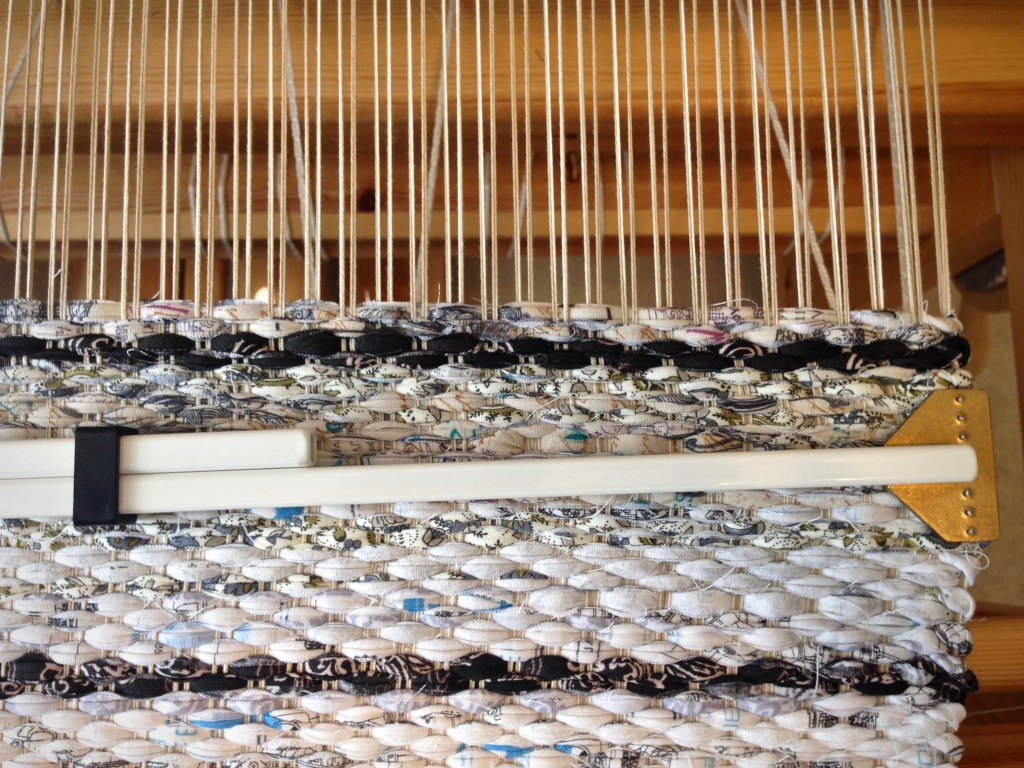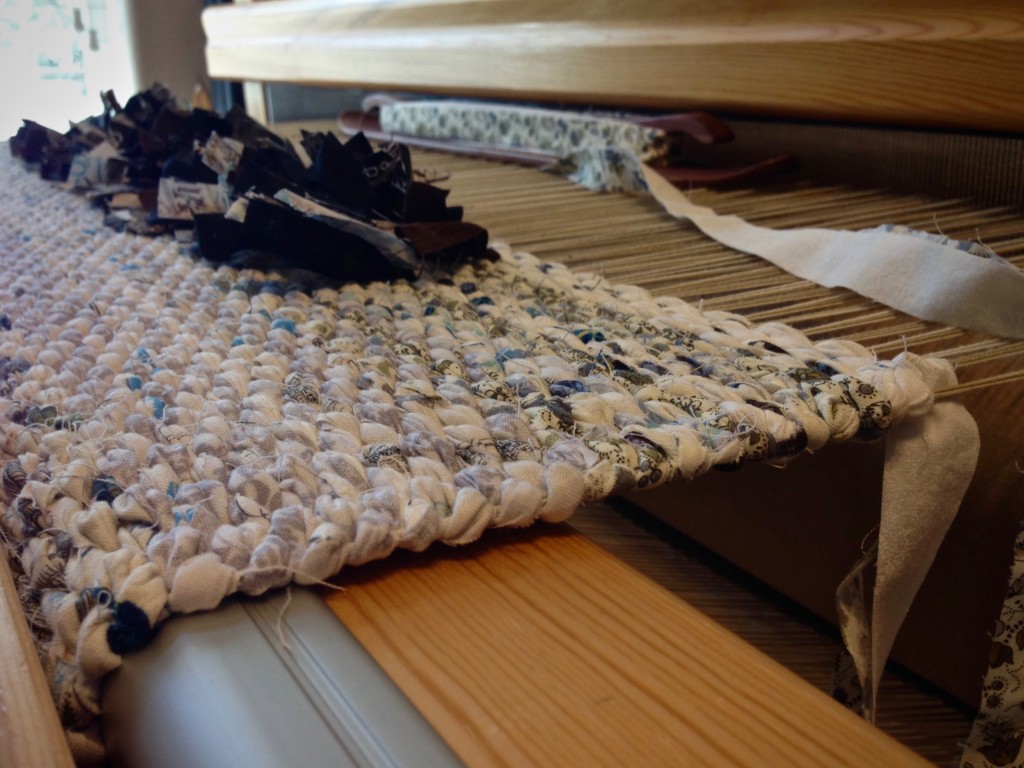I never use floating selvedges. Well,…almost never. For this block twill it does make sense to “float” the selvedges. The outermost warp ends are not threaded in the heddles–they “float” in the middle of the shed. The floating ends are wound on to the back beam with the rest of the warp. The floating selvedges provide a consistent woven edge, and prevent the skipped threads that would normally occur at the selvedge on an eight-shaft block twill. My ski shuttle enters the shed under the floating warp end, and exits the shed over the opposite floating warp end.
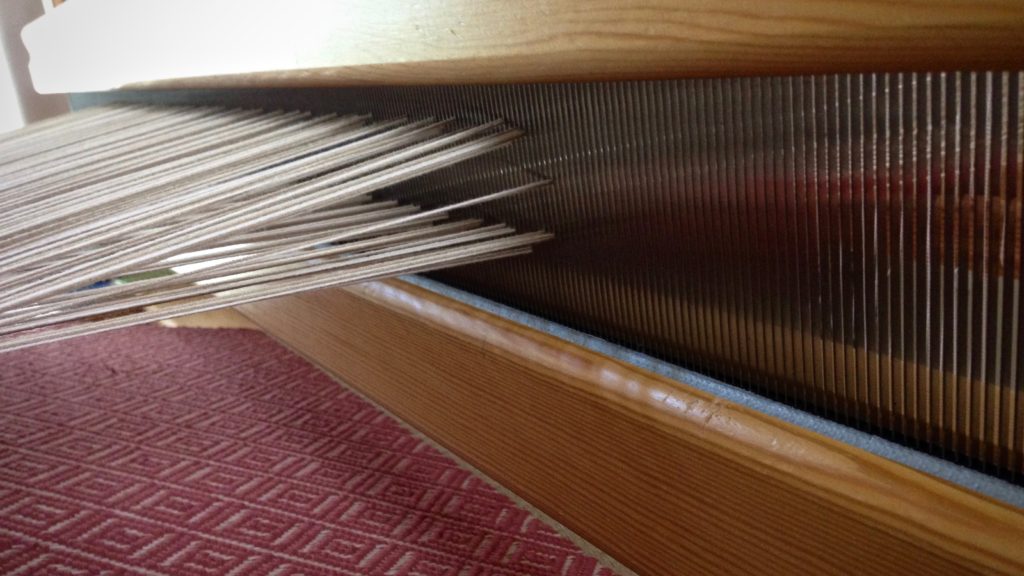
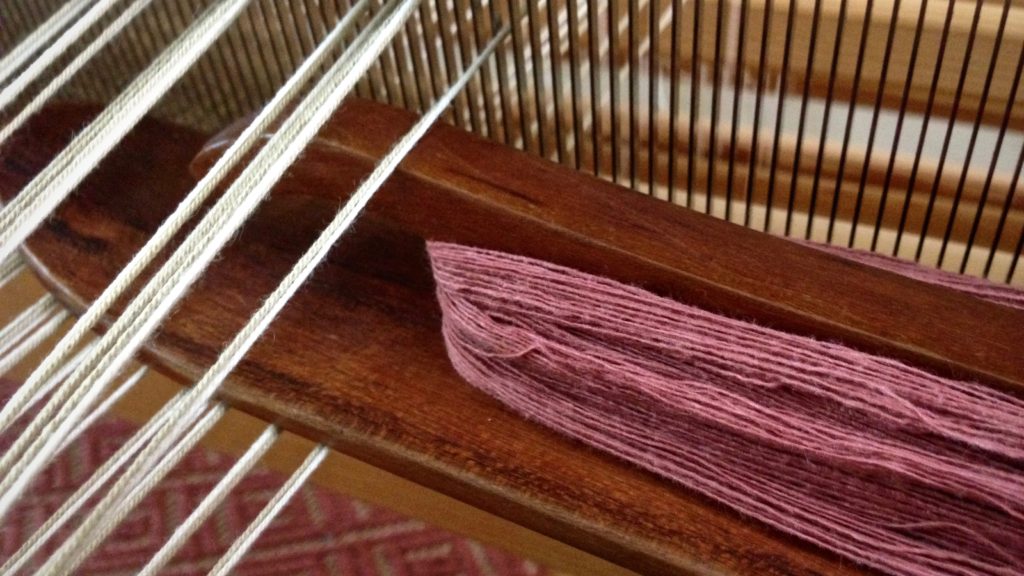
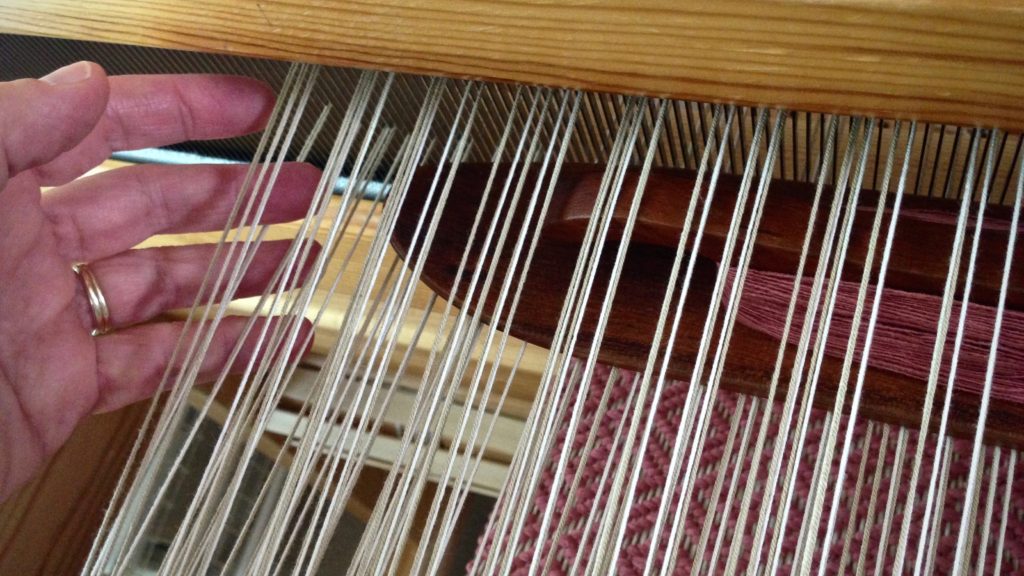
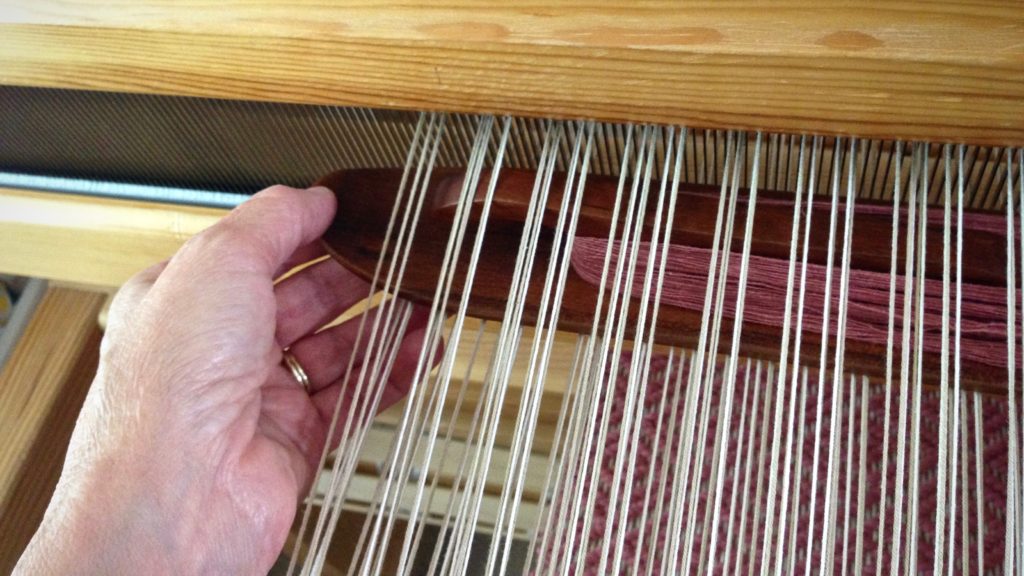
It is not unusual for the Lord to wait until I’m quiet before he answers. I may gripe about the obstacles, and try to wish or pray them away. But the Lord gently moves the shuttle under or over the floating selvedge to accomplish his work. For him, it is not an obstacle, it is a necessary part of creating this kind of cloth. When I get quiet, I can see what he is doing. And it is good.
May you know when to be quiet.
Yours Truly,
Karen

